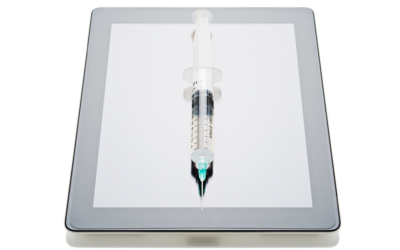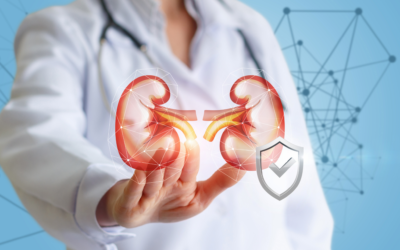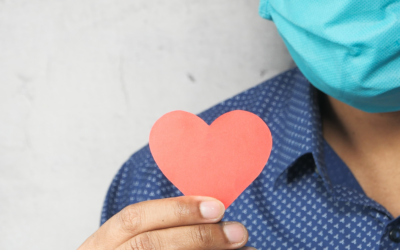You probably heard of 3D printing being used to manufacture everything from jewelry to dolls to furniture. Maybe you have even heard of bioprinting tissues for pharmaceutical research.
But did you hear about human organs being printed in outer space?
In this series, Science Fact or Fiction, I will continue diving into what sound like whacky science-fiction ideas (check out my last post on the idea of a digital afterlife).
This headline probably sounds much more fiction than fact, but it is not from a tabloid.
NASA is currently involved in experiments with bioprinting human organs on the International Space Station with the goal of transporting them back to earth.
There is a lot to unpack here, but the first question that pops to mind is why space?
Why space is the ideal environment for printing an organ:

3-D bioprinting has been around for a few years and involves printing layer-upon-layer of living material to create tissues. These tissues can form bone, blood vessels, muscles, or skin.
While this technology has advanced rapidly, the biggest barrier for scientists is the complexity of vascular structures – veins, capillaries, arteries, and lymph vessels.
Small, delicate structures like capillaries and veins are difficult to replicate. These wide networks of empty spaces are especially challenging with Earth’s gravity because they collapse easily.
To build these vessels, scientists either require scaffolding to hold them up with the trade-off that it limits growth, or stronger agents to build the vessels but are toxic to living cells.
Currently scientists have printed organ-like structures, such mini liver models and lung-like air sacs. These organ-like products allow experiments on human tissue to continue, such as testing pharmaceuticals or new viruses.
But these models still have to fight gravity and struggle to retain their shape.
Because it is low-gravity, space is a good environment for printing organs. Organs and vessels can retain their shape with much less risk of collapse or impeded growth.
How close is ‘printing organs in space’ to being real?
NASA is already working with a company called Techshot that created the BioFabrication Facility (BFF) for manufacturing whole human organs in space.
Techshot, based in Indiana, sent the BFF to the International Space Station in mid-2019. Their mission is to build bioprinted tissues in space and deliver them back to earth.
In January 2020 the BFF successfully printed heart cells, and they plan to create entire organs by 2025.
Techshot and NASA are currently working on printing the human meniscus – a disc of soft cartilage found in the knee. Meniscal tears are among the most common orthopedic injuries, so a bioprinted solution would have a ready list of customers.
NASA and Techshot are not the only groups working on these types of projects.
3D Bioprinting Solutions is a Russian biotechnology lab also producing tissues in space. The company printed meat in space a few years ago, and recently printed bone tissue.
There are definitely challenges besides actually printing a functioning organ. For one thing, regulatory approval such as with the FDA could take years before space-printed organs are accepted. It is also unclear if there will be barriers to general public acceptance of space-printed organs.
But assuming regulation and public acceptance eventually sort out, there are other big implications for organ transplantation, starting with how organs are currently sourced.
What does this mean for organ donation?

The appeal of being an organ-donor is the honor that comes with knowing you are saving someone’s life with your donation. But, if there is another way to obtain organs, the honor of donating could diminish.
Fewer people may choose to donate if they know there is another option and there is less prestige with being an organ-donor.
Donor organs may also still be needed for a while after bioprinted organs are available. For example, not all organ types may be available at once.
But we could see too many people opting out of organ donation before bioprinted organs are able to fill the gap. This would not be good news for organ waiting lists.
What does this mean for transplant waiting lists?

The initial assumption is space-printed organs would relieve strain on organ waiting lists. People who need organs could have them specially printed in space using their tissue as a base to minimize rejection.
The wait for an organ could be shortened to the time it takes to bioprint and mail back to earth.
This could revolutionize transplant lists if – and it is a big IF – lists are treated fairly and organs distributed based on need.
However, given what we saw with COVID-19 tests going to the wealthy and famous first, would we see space-printed organs sold privately instead of being given to the people at top of the waiting lists?
It seems plausible these organs could become an option for those who can pay a high price for them. Everyone else would wait for a donor organ to become available.
And if bioprinting organs in space makes them available faster, we could also see operating rooms and surgical teams becoming busier. Again, if it happens equitably, this could be a good thing to address transplant needs sooner.
Or, if bioprinted organs go to the highest bidder, will hospitals prioritize operating rooms for the wealthy?
The other possibility is the public rejects the idea of bioprinted organs because it just seems too…well…weird. If that were to happen, only people who do not have enough time might use bioprinted organs.
However, I think this is a less realistic possibility because organ transplants are not elective. People who need organs need them to live, so I cannot imagine many holdouts among those in need.
What does this mean for post-transplant care?

Typically the biggest risk following any type of organ transplant is rejection of the donor organ. If the patient’s immune system realizes the organ is from someone else, it will treat it as a foreign object.
Organ rejection is life-threatening, so transplant patients take medications to suppress their immune systems.
As a result, transplant patients are instructed to avoid a number of foods like sushi and leftovers, steer clear of people who are sick, and recognize signs of infection so they can seek emergency care.
For a bioprinted organ, however, the tissue is not coming from a donor and could be printed with the recipient’s own healthy cells.
In theory, it would not be necessary to suppress the recipient’s immune system. This means that person could start living a fairly normal life soon after transplantation.
This would then lower the number of people in the population considered ‘high risk’ for infection from viruses like the flu or COVID-19.
In fact, transplant patients could potentially take the same vaccines as healthy patients, thereby increasing herd immunity for everyone.
Could bioprinted organs be abused?

There are a few potential areas for abuse of bioprinted organs.
Making it easier for the wealthy and famous to skip the line and get to organs first is one way, which we already discussed.
Another would be the ability to create designer organs with performance enhancing features:
- A thyroid designed to speed up metabolism without the heart and eye problems;
- Lungs designed to intake more oxygen thereby boosting red blood cells and enhancing athletic performance;
- A liver that will allow you to drink as much Prosecco as you want without ever developing cirrhosis (ok, maybe only a few of us want that one).
It is clear rules are needed particularly in professional sports.
But it also raises questions of equity: is it fair for a professional athlete to get to order enhanced lungs while a child with severe asthma has to continue suffering because of cost?
Takeaways from the final frontier:
So, what should we think about all of this? Well, here is what I see as the key takeaways:
- This is a real thing currently under experimentation: Bioprinting organs in space is happening, and there have been some successes. It seems likely this will continue and evolve rapidly as it has been.
- It is complex, so it will take a while: Part of the complexity is evolving the technology to print a fully-functioning organ with the required blood vessels. The other part is sorting through the regulations around these organs. We should expect to hear more about this over the next decade.
- This could revolutionize organ transplantation: If treated equitably, this could change the game for organ transplants. Similar to the advances that made Hepatitis C curable and HIV a long-term illness, this could make organ transplants a ‘no biggie’ procedure.
However, we are still years away from this being a common source of transplant material. People in need now may not be here when this is available.
But, this does give hope that humanity’s next big breakthrough is just above the horizon.






Incredibly interesting! My first reaction is to be amazed by the technological advancements we’ve made, but it is also imperative to consider the controversies that will arise from this (will the wealthy be prioritized, the ethical dilemma of “designer organs,” etc.) Because this will likely become a hot-button issue in the very near future, and one that has the potential to directly affect me or people I know, it’s important to be aware of this information and apprised of the potential controversies.
Yes, it is super important, Talia. Even as new technology like this should make access to life-saving treatment more accessible, without awareness there is the real risk it will add to healthcare inequality.
This article was very interesting and it is no surprise that it might be criticized or seen as unethical as all technology advances seem to be under scrutiny. This printing could actually be a great advance in healthcare for people who need to get transplants urgently and it would end the awful waiting that people who need transplants have to endure. The success of the printing is definitely very exiting and it is so surprising that there isn’t a lot of media coverage on these great advances. Designer organs could be an issue as well but the immune system advances seem like very reasonable changes if it could prevent viruses from spreading. It will be very exiting to see how this idea evolves in the future.